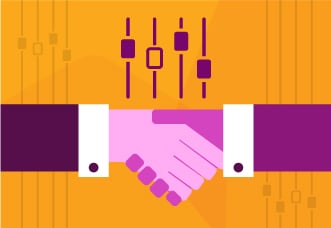


To improve collaboration within your organization you need to give your end users a more personalized experience. With most corporate teams pushing hard to standardize tools and processes, stemming the tide of unsupported productivity solutions seeping into the enterprise, this may sound counter-intuitive.

Of course, this perspective comes as no surprise to anyone working in the user experience (UX) field. Look at all of the leading social networking platforms and you'll find a uniform collection of features and basic layout, but innumerable configurations.
When users tweak and adjust their look and feel, add apps and widgets to automate, and change the background color scheme or template, it can actually increase the level of engagement on that platform.
People don't want to have to shuffle through content, change the filters on a view, and otherwise dig and search every time they enter a SharePoint site or social community -- they want their experience to be intuitive, easy to use, and to provide the right data, relevant messages, and people suggestions every time they log in. By personalizing your experience, you help organize the platform you're using to better fit the way in which you work, improving individual productivity as well as better aligning the platform with business systems and processes.
SharePoint has been moving this direction for quite some time, of course. With SharePoint 2010, the guidance provided to administrators was to build with the end user experience in mind, creating personal views (so that when an end user entered a team site, for example, they would first see the content or tasks relevant to them), automation through workflow and forms, and by simplifying the SharePoint experience (another way of saying -- improve the UI). But to achieve much of the simplicity and productivity enhancements end users wanted in SP2010, it often meant third-party solutions and customizations.
With SharePoint 2013 -- and even more so within Office 365, many of these configurations and customizations came to us out of the box, with the entire experience focused on giving the end user a personalized experience. The entire premise of the Office Graph, one would argue, is to identify content, conversations, and people that we are connected to through our various networks and activities and surface them at the right time, when we need them. The goal is to provide a personal view into relevant content, tasks, and projects, taking all of that complexity and serving it up in a format that fits our individual needs.
Personal productivity is a necessary ingredient of successful, organic team collaboration.
Personalization is, in many ways, the key to making collaboration work. Think about Facebook and Twitter -- both provide compelling out of the box functionality, but there seems to be (in my un-scientific opinion) some level of connection between personalization and activity. Regarding Twitter -- those who take the time to personalize their profiles, and the branding of their homepage, tend to spend more time using the core functionality -- and collaborating with others. These users add more content, make more contextual links between content and tags and people, and share more updates with their network. And by a higher level of activity, they encourage (enable) more collaboration and connectivity with their network. Facebook is much the same -- there is a logical connection between users who take the time to personalize their sites and the volume of posts. Yes yes, I understand that correlation does not imply causation, but there is clearly a relationship.
Expanding on that idea to our teams and business units -- the link between personalization and team collaboration is through sharing, and by adding context through interaction. That's why sharing content and activities through social experiences is at the heart of SharePoint, whether on prem or online. As we share, comment, tag, and simply read content within the system - or even visit a page or team site -- that data, that interaction is captured by the Office Graph and used to further personalize the environment. As the system learns about us, it improves -- and improves the experiences of the people within our network. As the platform improves, the UX for each end user improves. And the more comfortable people are within an environment, the more likely they are to utilize that environment.
At Beezy, we're proud of some of the advances we've made integrating Office Graph and its machine learning into our solution, helping our customers create amazing user experiences. We are helping them improve adoption, increase the level of engagement, and show the business value of collaboration. If you've not yet seen our latest release, contact us at info@beezy.net today and schedule a demo.

No Comments Yet
Let us know what you think